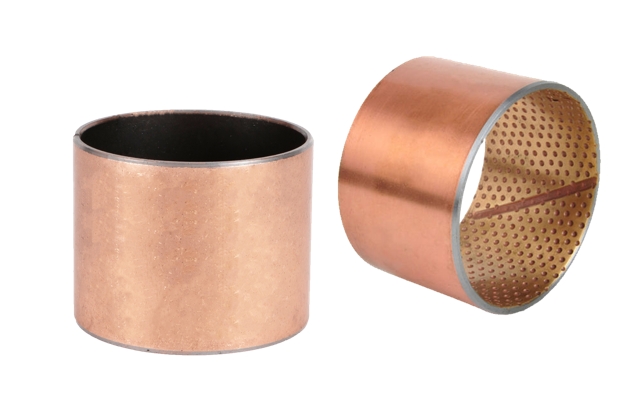In the area of machinery and mechanical systems, bushings play a crucial role in reducing friction and wear between moving parts. Among the various types of bushings available, bronze and composite bushings are widely used due to their unique properties. In this article, we will delve into the differences between bronze and composite bushings, exploring their materials, applications, and performance under high loads and wear resistance.
Introduction to Bronze Bushings
Copper Alloy Bushing and Brass Bushing
Bronze bushings are often made from copper alloys, which include a mix of copper and other elements such as tin, aluminum, or nickel. These bushings are known for their strength, durability, and excellent wear resistance. Brass bushings, a type of bronze bushing, are composed primarily of copper and zinc. They offer good corrosion resistance and are often used in applications where this property is essential.
Bearing Material and High Loads
Bronze bushings are favored for their ability to withstand high loads and heavy-duty applications. Their bearing material is robust, making them suitable for use in environments where they are subjected to significant mechanical stress. Additionally, their ability to retain lubricants enhances their wear resistance, ensuring a longer lifespan in demanding conditions.
Exploring Composite Bushings
Composite Bushing Material
Composite bushings, also known as composite bush or composite materials bushings, are made from a blend of different materials, often including polymers, fibers, and resins. These materials are combined to create a bushing that offers unique properties not found in traditional metal bushings. The use of advanced composite materials allows for the creation of bushings that are lightweight, corrosion-resistant, and capable of withstanding high loads.

Wear Resistance and High Loads
Composite bushings are designed to provide excellent wear resistance, making them suitable for applications where long-term durability is required. The materials used in composite bushings are engineered to reduce friction and wear, even under high loads. This makes them ideal for use in various industries, including automotive, aerospace, and industrial machinery, where they can enhance the performance and longevity of mechanical systems.
Key Differences Between Bronze and Composite Bushings
Material Composition
The primary difference between bronze and composite bushings lies in their material composition. Bronze bushings are made from metal alloys, predominantly copper-based, while composite bushings are constructed from a combination of polymers, fibers, and resins. This fundamental difference in materials results in distinct properties and performance characteristics.
Weight and Corrosion Resistance
Composite bushings are generally lighter than bronze bushings, which can be a significant advantage in applications where weight reduction is critical. Additionally, composite bushings offer superior corrosion resistance compared to their bronze counterparts, making them more suitable for use in harsh environments where exposure to moisture and chemicals is a concern.
Maintenance and Lubrication
Bronze bushings typically require regular lubrication to maintain their performance and prevent excessive wear. In contrast, many composite bushings are designed to operate with minimal or no lubrication, thanks to their self-lubricating properties. This reduces maintenance requirements and can lead to cost savings over the lifespan of the bushing.
Load-Bearing Capacity
Both bronze and composite bushings can withstand high loads, but their performance can vary depending on the specific application. Bronze bushings excel in heavy-duty applications where high mechanical stress is present. Composite bushings, on the other hand, offer a balance of high load-bearing capacity and enhanced wear resistance, making them versatile for a wide range of uses.
Conclusion
When choosing between bronze and composite bushings, it's essential to consider the specific requirements of your application. Bronze bushings, with their robust bearing material and high load-bearing capacity, are ideal for heavy-duty environments. Composite bushings, with their lightweight, corrosion-resistant, and wear-resistant properties, offer a versatile solution for various industrial applications. By understanding the differences between these two types of bushings, you can make an informed decision that ensures optimal performance and longevity for your mechanical systems. As a professional composite bushing manufacturer and self-lubricating system provider, we would be pleased to advise you individually, and you are also welcome to send your inquiry to sales@zjbearings.com.